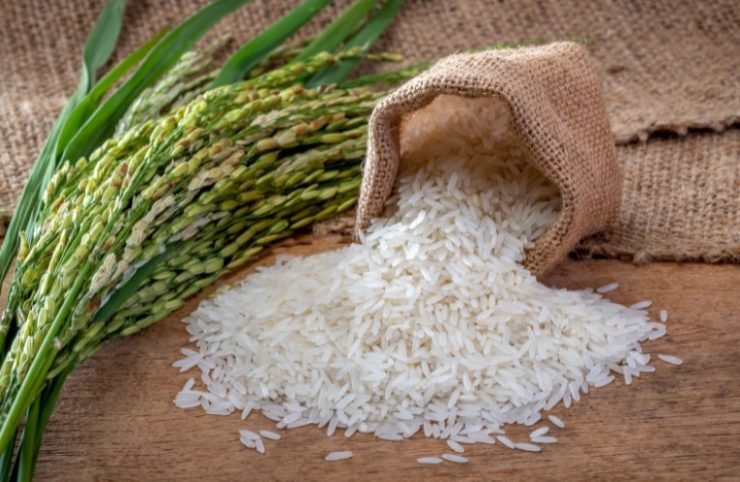Most types of rice have a relatively mild flavor, and that makes them a great blank canvas that can adapt to a variety of dishes and cuisines. And while the same is true for jasmine rice, you can really highlight its unique flavor, aroma, and texture by pairing it with certain foods.
So, if you want to get the most out of your jasmine rice, try one of these 6 ideas that will impress and are sure to elevate any meal.
In This Article
The 6 Best Things To Serve With Jasmine Rice
1. Thai Curry
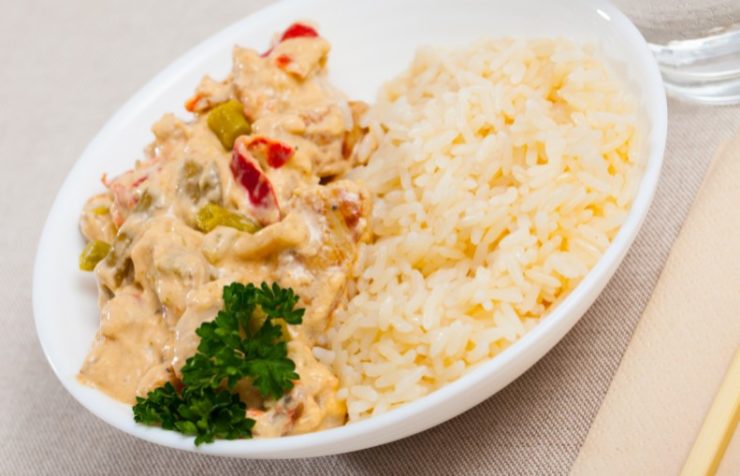
Thai curry is a pretty broad category, but no matter what kind you’re eating, steamed jasmine rice is the perfect pairing.
Whether you’re ordering take-out or making your own, some of the most common Thai curries you’ll come across are Red, Yellow, Green, Panang, and Massaman. While each one contains different and unique ingredients, they also have a lot of flavors in common.
Coconut milk, ginger, galangal, lime juice, chilis, and shrimp paste (or fish sauce) are the backbone of a variety of different curries. And that combination of flavors is a match made in heaven when combined with a bowl of fragrant jasmine rice.
To make things even simpler, jasmine rice really goes well with just about any Thai dish you can think of. And that makes sense since that’s where most Jasmine rice is grown and consumed.
2. Grilled Meat And Seafood
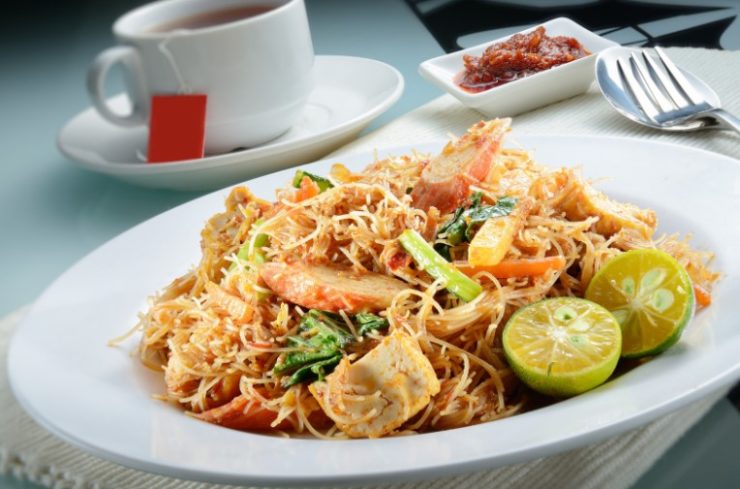
There’s something about a nice charred protein that goes exceptionally well with jasmine rice. Maybe it’s the slight sweetness you get from the rice that helps balance the bitterness you get from the char. No matter what it is, it’s a delicious duo.
This is a combination that seems to transcend every cuisine. It could be Mediterranean with lemon and olive oil, Chinese with soy sauce and sesame oil, or even American BBQ with a sweet vinegar sauce. The options here are endless!

Don’t Waste A Drop: Use a bed of jasmine rice as a resting place for meat straight off the grill. It’s an easy way to serve food directly on the table and elevate the taste of the rice without any extra effort.
3. Stir Fry
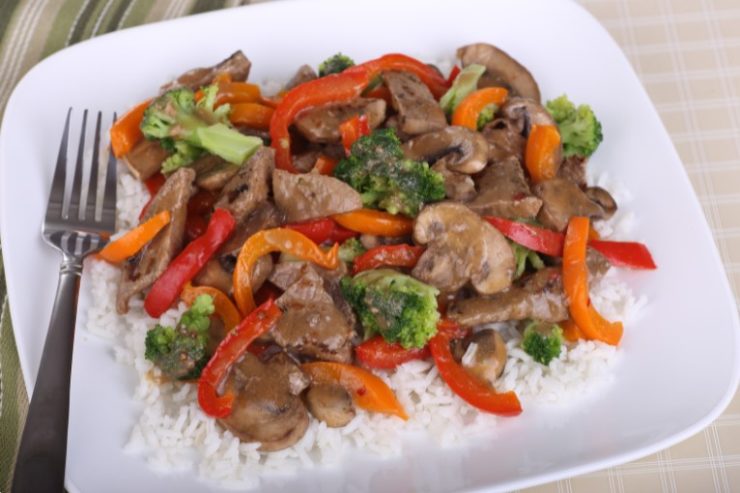
In general, a stir fry will be made from bite-size pieces of meat, vegetables, or both. All cooked quickly over high heat, often with some form of sauce. And the best way to eat it? You guessed it, directly over a steaming bowl of jasmine rice.
There are an endless number of stir fry styles and combinations you can make. Since jasmine rice is a fairly blank canvas, it will soak up any oils and sauces from your stir fry. And chances are very good that they will taste great together.
4. Cilantro And Lime Juice
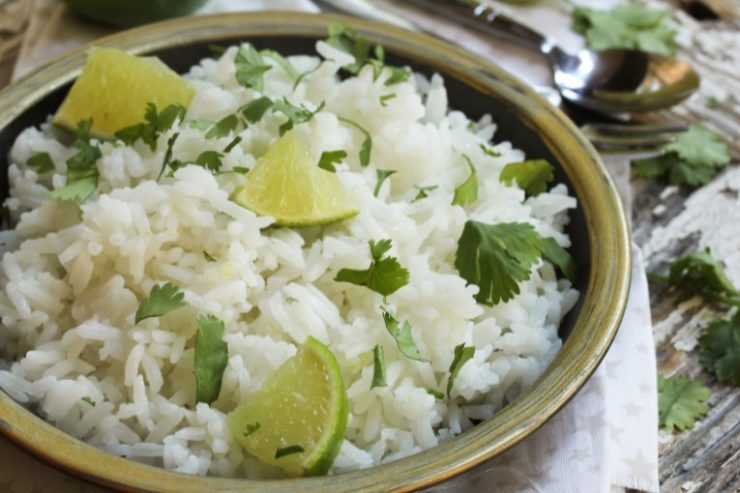
I think you can probably guess what I’m getting at here. Jasmine rice is an ideal choice when you want to make cilantro-lime rice for your next Mexican feast or for stuffing in a burrito like you-know-who.
Jasmine rice is a particularly good choice for this because it has a firm texture and the grains don’t lump together as much as shorter grain options. That helps it to stand up well when mixed with other ingredients without becoming sticky and mushy.

Keep It Separated: To further ensure your rice grains stay separate and don’t clump together, add a splash of oil when mixing with the cilantro and lime. Or better yet, use the drippings from any meat you might be cooking instead.
5. Fried Rice
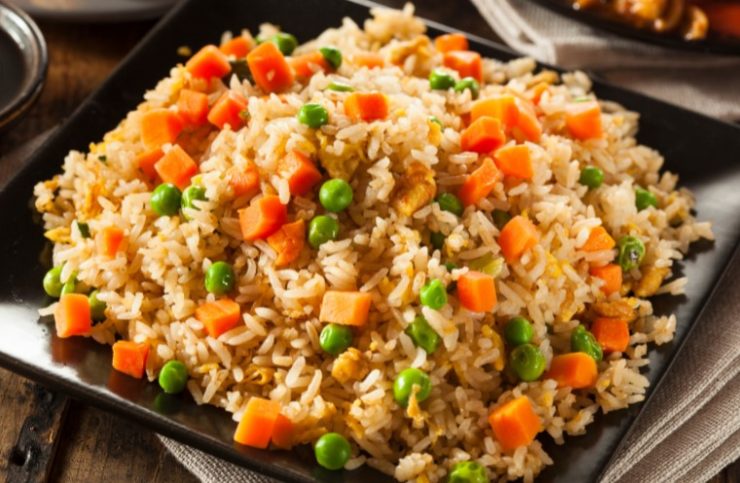
While not traditional for Chinese fried rice, jasmine rice makes for a delicious substitute. And it is what you would generally find in Thai fried rice.
The more common fried rice choice would be a medium or short grain. But there are actually a couple of benefits you get from the longer grain jasmine. First, jasmine rice is less prone to sticking and clumping together. So it’s easier to get fried rice where all of the grains are separate, and that’s what you want.
The second is the delicate aroma you get from jasmine rice. This can add a little extra nuance and depth of flavor to enhance even a plain or would-be boring fried rice.
6. Hainanese Chicken Rice
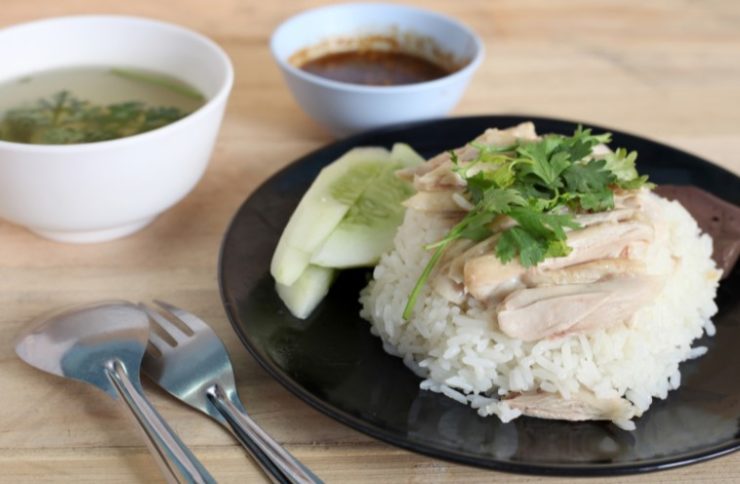
Most of the options on this list are fairly broad categories. Hainanese chicken rice, on the other hand, is pretty specific. It’s one of the few dishes where jasmine rice is basically a requirement.
The unofficial national dish of Singapore is a seemingly simple one.
It’s made up of poached chicken, rice, and various condiments like chilis, sweet soy, and cucumbers. And while you may assume that the chicken would be the center of attention, it’s really the rice that’s the star of the show.
After poaching the chicken, the broth and chicken fat are used to cook the jasmine rice. This really elevates the rice creating a rich, aromatic, and flavorful dish that’s far from your ordinary bowl of steamed rice.
How To Cook Jasmine Rice
If you have a rice cooker you can probably go ahead and skip this section. That magical little machine should be turning out perfectly steamed rice every time. If not, please proceed.
1. Rinse
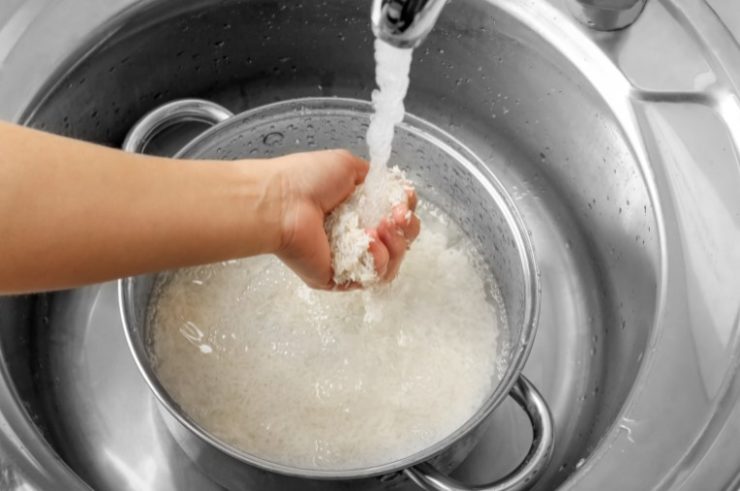
Run cold water over your rice while agitating it with your hand to help release excess starch. Drain and repeat several times until your water is relatively clear. Getting rid of the excess starch helps the rice to be less sticky so that you end up with individual grains instead of gluey clumps.
2. Measure And Add Water

My grandma used the first knuckle on her index finger to measure how much water she needed for any amount of rice and it was perfect every time. For the rest of us, 1 part jasmine rice to 1 ¼ parts water will do. So, for 1 cup of dry jasmine rice, use 1 ¼ cups of water.
3. Let Rice Soak (If You Have Time)
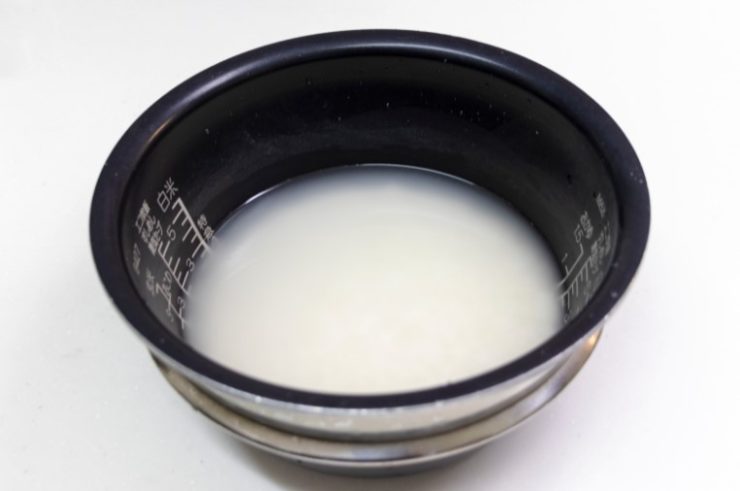
Once you’ve added your water, let the rice soak for 30 minutes to an hour at room temperature. This step is optional, but it will help your rice cook more evenly.
4. On The Heat
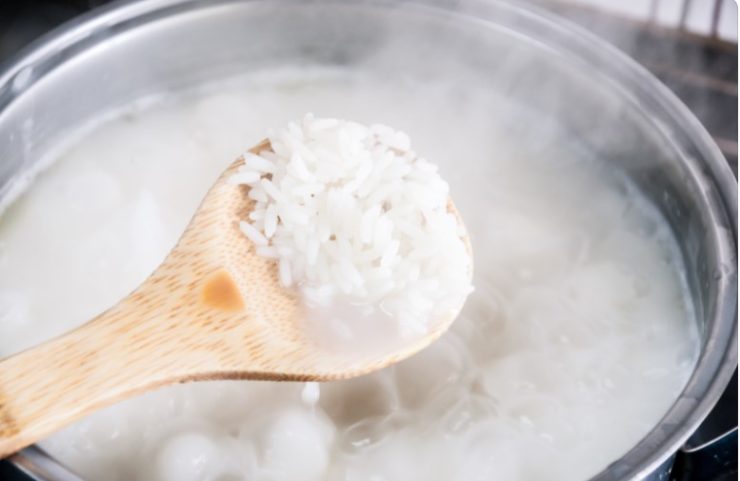
Place your pot with rice and water over medium-high until it just barely starts to simmer. Once you start to see bubbles, turn the heat to low, cover with a lid, and set a timer for 18 minutes. You should be able to hear or see gentle bubbles during the cooking process. If there’s no movement, turn the heat up just a bit.
5. Off The Heat

After 18 minutes take a peek under the lid. If you can still hear or see water in the pot, put the lid back on and check back every couple of minutes. If you’re greeted with steam and no excess water, leave the lid on, remove the pot from the heat and let rest for 5-10 minutes.
6. Fluff And Eat
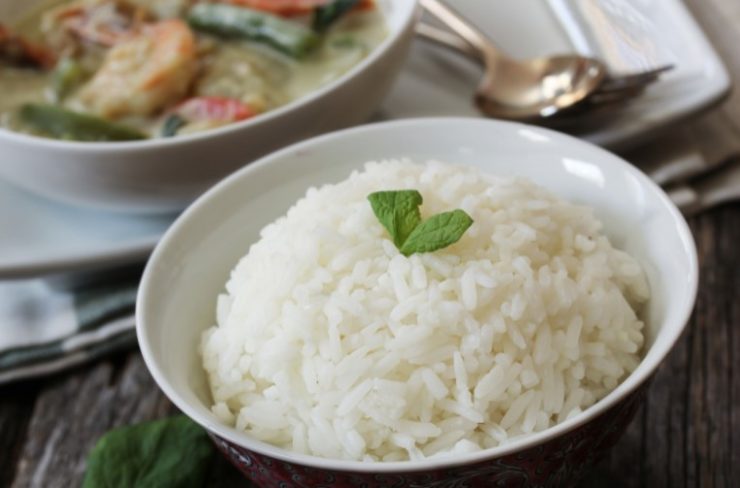
Using a wooden spoon or whatever utensil you have, fold and fluff the rice to keep it from compacting and clumping. Pat yourself on the back and dig in.
Frequently Asked Questions
Is There Brown Jasmine Rice or Only White?
Yes, there is brown jasmine rice. Brown jasmine rice has not been polished and so it still has it’s outer bran and germ intact. Brown jasmine rice has a chewier texture and requires more water and time to cook.
Is Jasmine Rice Short Or Long Grain?
Jasmine rice is long-grain rice. It can be used in place of other types of long-grain rice like basmati, but it will have a slightly different flavor and texture.
Are There Jasmine Flowers In Jasmine Rice?
No, jasmine rice naturally produces aromatic compounds that give it its distinct scent and flavor.
